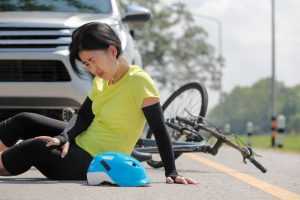North Carolina Bicycle Accidents Attorney
 With the passage of the comprehensive Bicycle and Bikeway Act of 1974, North Carolina established the first state bicycle program in the nation. Our state’s law quickly became a national model. The legislation granted authority for the North Carolina Bicycle Program (now the Division of Bicycle and Pedestrian Transportation) to undertake comprehensive bicycle planning and programming. Obviously, bicycling is very popular in our state. Contact bicycle accidents attorney today.
With the passage of the comprehensive Bicycle and Bikeway Act of 1974, North Carolina established the first state bicycle program in the nation. Our state’s law quickly became a national model. The legislation granted authority for the North Carolina Bicycle Program (now the Division of Bicycle and Pedestrian Transportation) to undertake comprehensive bicycle planning and programming. Obviously, bicycling is very popular in our state. Contact bicycle accidents attorney today.
Bicycle accidents have become quite common, especially in college towns and major metropolitan areas. Inner city dwellers often choose bicycles to avoid traffic and to save fuel. Unfortunately, drivers in these busy areas often fail to watch for bicycles. The resulting accidents can truly be catastrophic.
Rider visibility is a primary focus in bicycle investigations. Insurance adjusters always look at the lighting, reflectors, and the rider’s clothing and helmet to determine whether the bicyclist followed all safety rules before attempting to share the roadway. Again, the pure contributory negligence law in North Carolina allows the insurance company to deny all claims if they can show that the bicyclist was just 1 percent at fault. Because a headlight is required by statute, insurance carriers will commonly deny nighttime bicycle accidents if the rider did not have a proper headlight illuminated at the time of impact. Similarly, they look at the rider’s clothing and all other actions of the bicyclist purely with an eye toward defending the case and denying liability for all accident claims.
Under North Carolina law, a bicycle has the legal status of a vehicle. This means that bicyclists have full rights to share the roadway, and they are also subject to the traffic laws and regulations governing the operation of a motor vehicle. North Carolina traffic laws require bicyclists to:
- ride on the right side of the road in the same direction as other traffic
- obey all traffic signs and signals
- use hand signals to communicate intended turns and movement
- equip their bicycle with a front lamp visible from three hundred feet and a rear reflector that is visible from a distance of two hundred feet when riding at night
- wear a bicycle helmet on public roads, public paths, and public rights-of-way if the rider is under sixteen years of age
- secure child passengers in a child seat or bicycle trailer if under forty pounds or forty inches in height
Bicyclists are encouraged to be thorough when they present property damage claims. If the bicyclist was innocent, the responsible driver and insurance carrier owe the lesser of repair or replacement of the bicycle. Bicycle design technology is rapidly advancing. Carbon fiber frames and other lightweight components can be very costly. The bicyclist is entitled to the lesser of repair or replacement of the bicycle. There is a strong secondary market for high-end bicycle components. By carefully proving the full value of the bicycle and all safety equipment, you will motivate much higher payments for bicycle damage claims.
Injuries from bicycle accidents can be quite severe. Photographs of all road rash and visible injuries should be taken immediately after the accident. Photograph and video should also be taken during the recovery process, especially when surgery or other aggressive care is involved.
Bicyclists are encouraged to stand strong on their injury claims. Jurors favor bicyclists and appreciate the seriousness of these claims. The only negative bias we see is the occasional case where the bicyclist is involved in an accident on a high-volume roadway when he or she causes congested traffic. In the inner-city accident case, jurors typically sympathize with the injured bicyclist and they render very generous verdicts.
